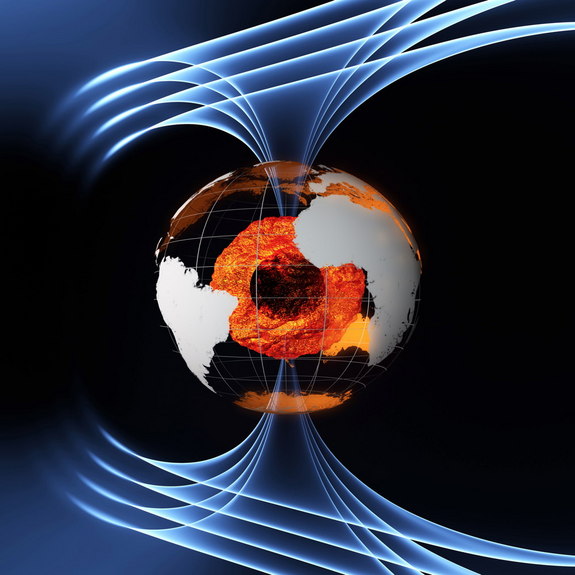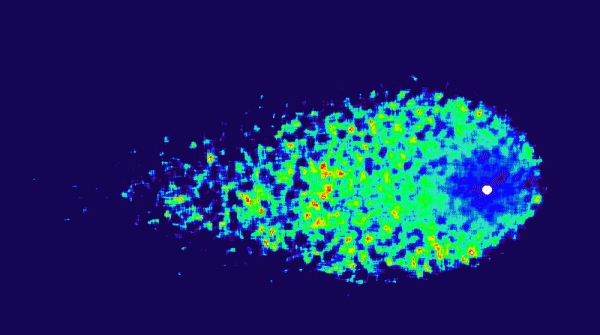
© ESA/AOES MedialabEarth's magnetic field is generated by interactions in its molten outer core. As the flowing iron generates electric currents, the electromagnetic field is constantly changing.
Earth's magnetic field shields the planet from charged particles streaming from the sun, keeping it from becoming a barren, Mars-like rock. For more than 300 years, scientists have recorded a westward-drifting feature in the field that models have been unable to explain.
By relying on insights gleaned from previous work, as well as data collected over nearly four centuries, an international team of scientists has been able to provide a model that accounts for the western drift of the
magnetic field on one side of the planet.
"People have tried various configurations regarding the state of the core-mantle alignment," lead author Julien Aubert, of the Université Paris Diderot in France, told SPACE.com in an email."The ingredients were here, but they were never put in the right configuration, in particular for reproducing the geomagnetic westward drift."




Comment: See also:
The Comet and the Chicago Fire
Comet Biela and Mrs. O'Leary's Cow